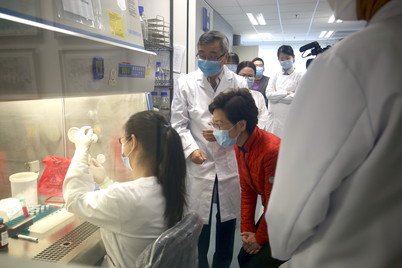COVID-19: Uncovering the Secrets of the Sewers
Sewage tells the health of a city.
COVID-19 is largely an invisible threat, lurking inside the bodies of the infected where it is often undetected. Testing uncovers some, but not all of those infected, as sometimes the virus is present in a level that is too low to be detected by testing. But there is one place where the virus can be detected: Sewage.
Professor Tong Zhang of the Department of Civil Engineering tracks the virus in sewage as an advance information source. When the toilet is flushed, the water and all it contains is carried into the sewer system, which is shared by the entire building. A wider area can be tested by investigating the sewerage in a manhole where the sewage from multiple buildings ends up. By identifying the presence of the virus in the sewage of a building, the government can take action to test residents who may not know they are infected.
The sewage surveillance project can provide early warning of the presence of a COVID-19 outbreak. Used in tandem with clinical testing, this can provide crucial early warning of an outbreak in the community. Changes in the sewage can also be used to track changes in the development of the virus in the community. Sewage monitoring also enables monitoring of building estates that have infection clusters and provides information that can help inform decision-making.
Investigating sewage to monitor diseases is a new though fast developing field of research. The sewage test protocol that has been adopted by the HKU team is a new method which has been used since April 2020. “After we communicated with Professor Gabriel Leung, Dean of the Li Ka Shing Faculty of Medicine, he believed this could be a supplementary information source for public health decision-making,” explained Professor Zhang, adding that sewage monitoring can have an important impact outside Hong Kong as well.
The Food and Health Bureau became involved, followed by the Environment Bureau, Environmental Protection Department and Drainage Services Department, who together provide full supports for the project. The government is keen to continue expanding the level of testing. “First we were doing about 26 samples a week. Now we are testing 24 to 26 samples every day, including weekends,” Professor Zhang said.
Professor Zhang’s work also shows the importance of fundamental research and technology for society. “Without this research and development, we may not have been able to invent this very successful application to identify hidden source of the virus in the environment,” he added.



